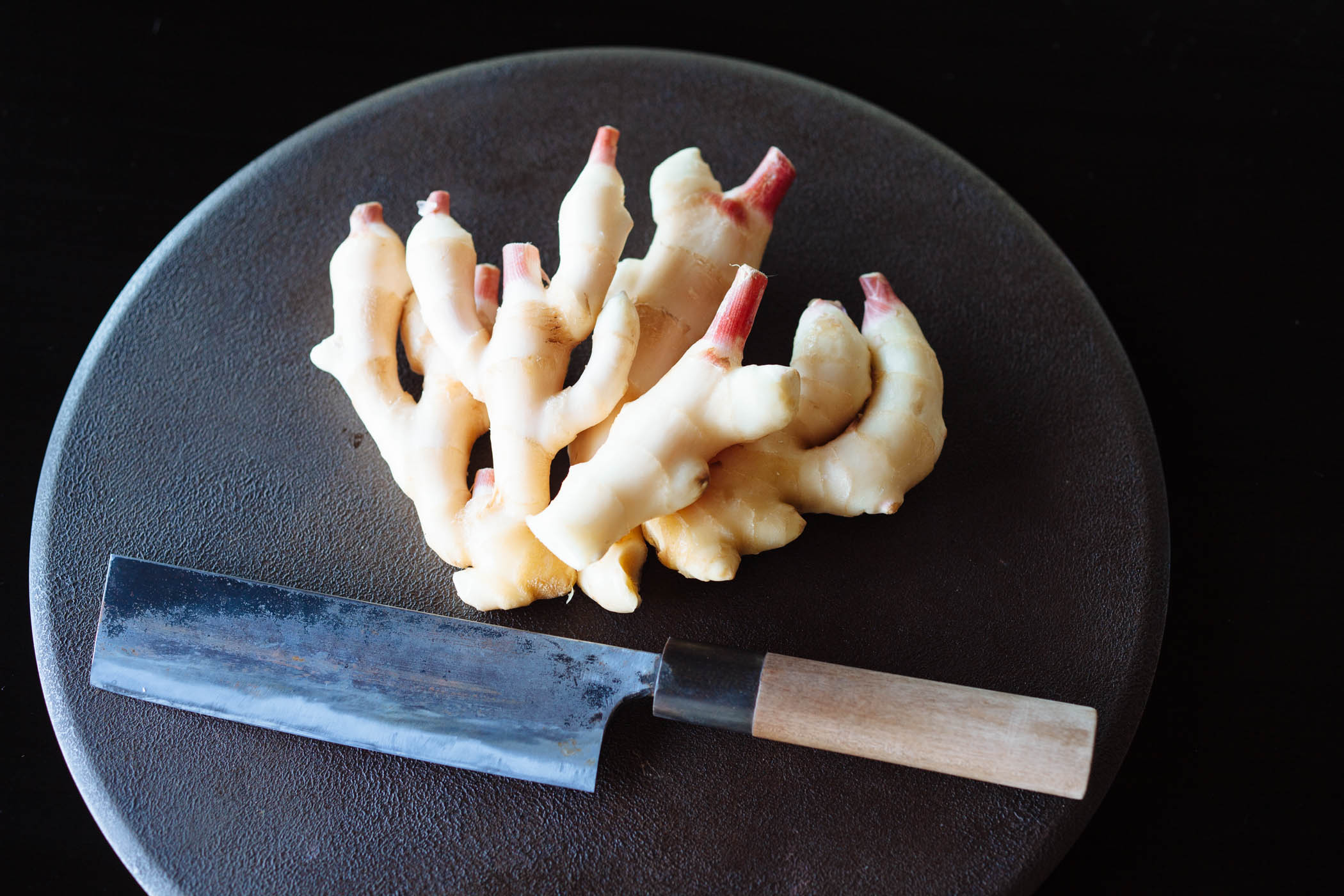Shinshoga new ginger

The road out of summer took a clear turn towards fall this past week. An afternoon rain left not cool but cold air in its wake. As we rise we sleepily murmur of bringing warmer bedding out of storage. Days are quieter as the steady vibrato of crickets replaces the shrill whir of cicadas.
I live by the seasons, the prickle of cold on my skin eliciting anticipation of sweaters and warm fires in the stove. Seasons mark the passing of time, organizing my year into chapters. I’m a virgo, I like things to be organized. The seasons offer a cyclical tempo that suits me, familiar and reliable but never exactly the same.
The seasons here in Mirukashi don’t run to the same extremes as they do in my native New England, as I imagine they do up in Hokkaido, but they are distinct nonetheless. As the landscape changes, so too does the air, the light, the shape of the clouds, the sounds and length of the day, on a subtler but noticeable scale. And with the shift in seasons comes a shift in desires, the temperature of showers and drinks, the weight and consistency of meals. When grown in season, the ingredients at the market often match these desires. Denser, starchier vegetables and fattier fish as the cooler temperatures and shorter days set in.
Eating in season is the most basic and sensible thing to do. For most species, there is no other way, as it was for us for millennia. But today it’s in the public discourse, a luxury that some have and others don’t, which speaks volume to how untethered our food systems have become from our daily lives and how distant and unknown the origins of food can be.


There may be no notion more closely associated with Japanese cuisine than seasonality, a concept often seen as enlightened and regarded with reverence. But it’s just common sense, really. However even here in Japan its application and practice is sometimes nonsensical. I’ve been to restaurants where seasonal ingredients appear comically early, as though in competition to get it on the menu before anyone else does. Under the bright glare of department store or supermarket lights, seasonality is used as a marketing strategy leading to a skewed presentation of ingredients out of season, like strawberries in February and new ginger in June.
Even I get a thrill when the pink tipped straw colored smooth skinned rhizomes of shinshouga, new ginger, line the shelves at the markets in early summer. They’re just beautiful enough to make your heart race a bit and elicit the a tart taste of it pickled in rice vinegar to accompany sushi, or preserved in shiso stained red ume vingear. If you don’t give it much thought, you’d assume that it’s the ginger harvest season. And it is, in a way, if the ginger is grown in greenhouses, as much of it is. Just as strawberries are grown under climate controlled cover to harvest in February. Rows and rows of greenhouses, with whirring fans and lights burning late into the night, are a ubiquitous sight when driving around rural Japan. There the finest specimens of any ingredient are carefully cultivated to catch the eye. Unfortunately aesthetics often come at the expense of flavor.
If you go a good market today, you’ll see new ginger on the shelves, because if allowed to feel the natural light of day and the temperature and moisture of the soil, ginger will mature in early autumn, just as the air turns cold and our bodies crave its warming effect.
